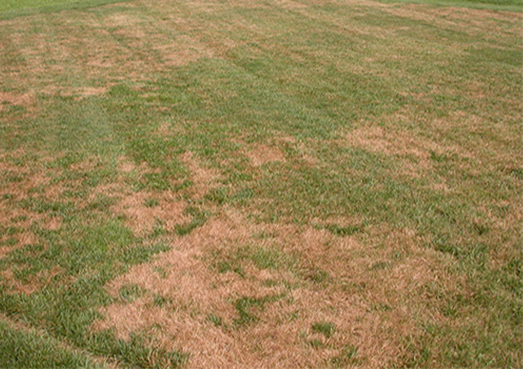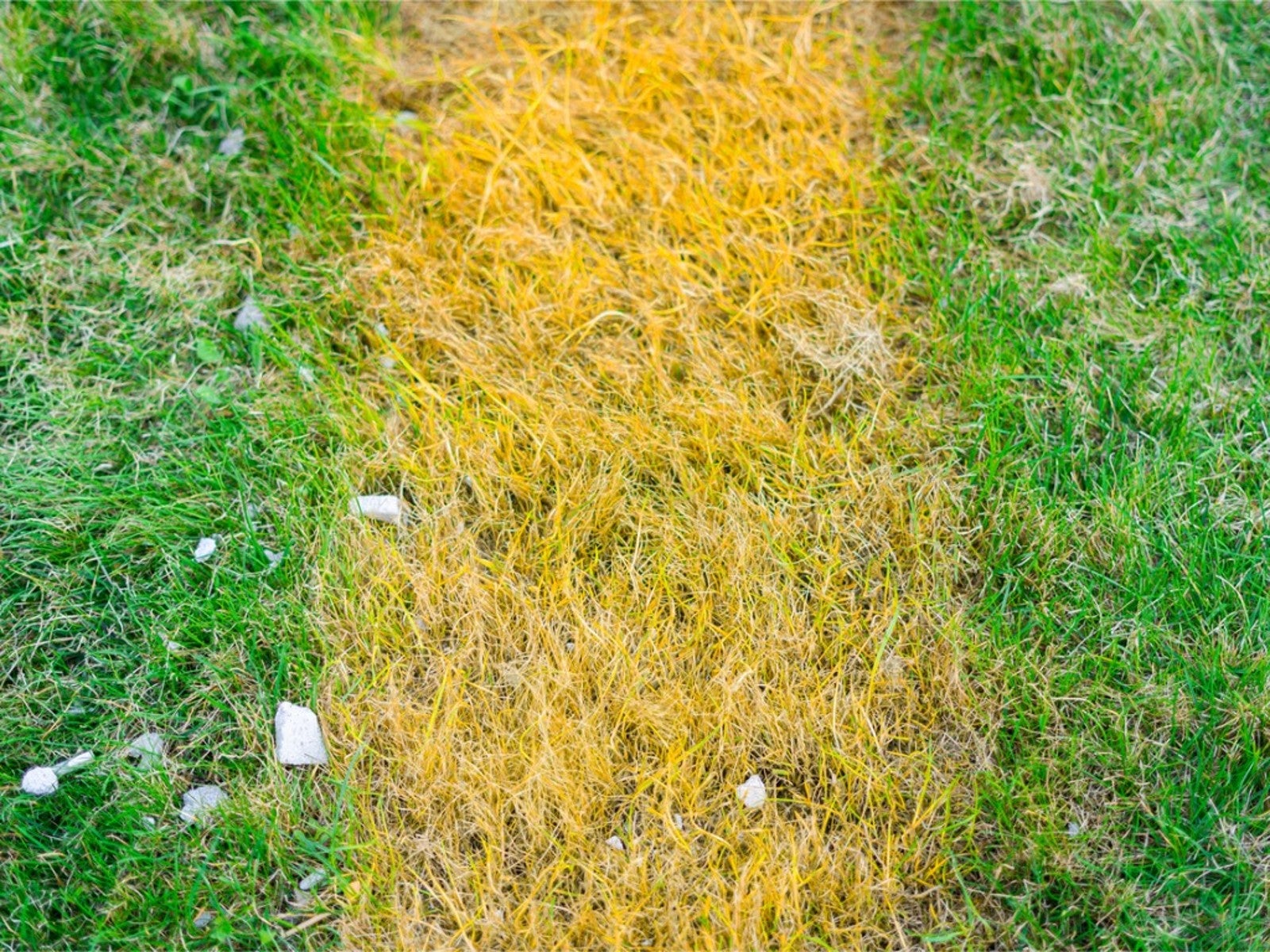Your lawn is a source of pride, a lush green canvas that enhances the beauty of your home. But what happens when unsightly brown patches begin to appear, disrupting that perfect green expanse?
It can be frustrating to see your once vibrant lawn marred by these blemishes. You might be wondering what causes these patches and, more importantly, how to get rid of them for good. Imagine the relief of restoring your lawn to its full glory, free from those troublesome brown spots.
In this guide, you’ll discover the most effective treatments for brown patches in your lawn, empowering you to take action and reclaim your outdoor space. Let’s dive into the solutions that will bring back the lush, healthy lawn you love.
Contents
Identifying Brown Patch
Brown patch in lawns appears as circular, discolored areas, often with a darker ring. Effective treatment includes improving drainage, reducing watering, and applying appropriate fungicides. Regular lawn care helps prevent its spread.
Identifying brown patch in your lawn can be a bit tricky if you aren’t sure what to look for. This common lawn disease can sneak up on you, turning your lush green grass into unsightly patches of brown. Don’t worry! By learning to identify the symptoms early, you can tackle the problem before it spreads.
Symptoms And Signs
Brown patch typically shows up as circular patches ranging from a few inches to several feet in diameter. You might notice the grass blades in these areas turning brown or yellow. In the morning, when dew is present, a grayish ring resembling smoke might appear around the patch. This is a telltale sign that your lawn might be facing a brown patch problem.
Common Causes
Warm, humid weather is the perfect breeding ground for this disease. If your lawn is overwatered or if the grass stays wet for long periods, it creates an ideal environment for brown patch. Using too much nitrogen fertilizer can also make your lawn more susceptible. Heavy doses can stress the grass, making it vulnerable to this disease. Have you ever thought about how your lawn care routine might be contributing to the problem? Simple changes in watering or mowing can make a big difference. Reflect on your current practices and consider adjustments to protect your lawn from brown patch.

Credit: weedman.com
Prevention Techniques
Preventing brown patch in lawns involves proper watering, mowing, and fertilizing. Water deeply but infrequently to discourage fungus. Mow at the recommended height for your grass type to promote healthy growth. Use a balanced fertilizer, avoiding excess nitrogen, which can encourage fungal diseases.
Maintaining a lush, green lawn is a source of pride for many homeowners, but brown patches can quickly ruin the aesthetics of your yard. Prevention is key to keeping your lawn healthy and vibrant. By implementing a few strategic techniques, you can significantly reduce the risk of brown patches and enjoy a thriving lawn year-round.
Proper Watering Practices
Watering your lawn might seem straightforward, but doing it correctly can make all the difference. It’s best to water deeply and less frequently. This encourages roots to grow deeper, making your lawn more resilient. Consider watering early in the morning. This allows the grass to dry throughout the day, reducing the risk of fungal growth. Avoid watering in the evening, as it can leave your grass damp overnight, a perfect condition for brown patches to form.
Ideal Mowing Heights
Mowing your lawn might feel like a chore, but it’s crucial for its health. Keep your grass at the right height to ensure it stays robust and resistant to diseases. Generally, most grass types thrive when cut to about 2.5 to 3 inches tall. Have you ever noticed how a shaved head can make you feel colder? Grass works similarly. Cutting it too short can expose the soil to sunlight, drying it out quickly and stressing the grass.
Soil Aeration Importance
Compacted soil can suffocate your lawn. Aeration is a simple yet effective way to ensure your lawn gets enough air, water, and nutrients. By regularly aerating, you allow the roots to grow stronger and deeper. Have you ever tried to grow a plant in a pot without holes? It struggles because water doesn’t drain, and roots can’t breathe. Your lawn is no different. Aerate your soil once or twice a year to keep it healthy and free from brown patches. Taking these preventive measures can save you time and money in the long run. What’s your current lawn care routine? Maybe it’s time to tweak it for better results!
Cultural Control Methods
Brown patches on your lawn can be a real eyesore, but don’t worry—there are effective cultural control methods that can help restore your lawn to its lush, green glory. These methods focus on the natural ways to manage your lawn’s health, reducing the risk of brown patches without relying heavily on chemical treatments. Embrace these techniques to enhance your lawn care routine, making your grass healthier and more resilient.
Grass Selection
Choosing the right type of grass is your first defense against brown patches. Different grasses thrive in different climates and soil types. For instance, if you live in a humid area, opt for grass varieties like St. Augustine or Bermuda, which are more resistant to fungal infections. Research which type of grass best suits your region and soil conditions.
Personal experience can be a great teacher. I switched to a more suitable grass type for my area, and it made all the difference. My lawn was greener and healthier, with significantly fewer brown patches. Think about whether your grass type is helping or hindering your lawn’s health.
Fertilization Strategies
Proper fertilization is crucial in preventing brown patches. Over-fertilizing can weaken grass and make it susceptible to disease. A balanced approach is key. Use slow-release fertilizers that provide nutrients steadily over time, promoting consistent growth and resilience.
Consider the timing of your fertilization. Applying fertilizer in the fall helps grass store nutrients and prepare for winter dormancy, while spring applications boost growth. Have you been fertilizing at the right times for optimal lawn health?
Thatch Management
Thatch, a layer of dead grass and roots, can suffocate your lawn, leading to brown patches. Regularly managing thatch helps air, water, and nutrients reach the soil. Aerate your lawn to break up thick thatch layers. You can rent an aerator from garden centers or hire a professional.
I’ve found dethatching in early spring works wonders for my lawn. It breathes new life into the grass by reducing the thatch build-up. Is your lawn suffocating under a thick layer of thatch? Check for excessive thatch and take action to ensure your lawn can breathe.
These cultural control methods are practical and effective in combating brown patches. Implement them, and you’ll be well on your way to a healthier, happier lawn. How will you adapt your lawn care routine to protect against brown patches?
:max_bytes(150000):strip_icc()/brown-patch-lawn-disease-2153086-01-23d7884892654464b93d03ee60437aca.jpg)
Credit: www.thespruce.com
Chemical Treatments
Chemical treatments offer effective solutions for brown patch problems in lawns. They target the fungus causing the unsightly patches, ensuring lush and healthy grass. Choosing the right chemical treatment can restore your lawn’s appearance and vitality. Below, explore different fungicide options, the best times to apply them, and essential safety precautions.
Fungicide Options
Fungicides come in various forms. Liquid and granular versions are popular choices. Some fungicides are preventive, while others treat active infections. Chlorothalonil and azoxystrobin are common active ingredients. They combat the fungus effectively. Systemic fungicides enter the plant’s system. They protect from the inside. Contact fungicides work on the surface. They prevent new infections.
Application Timing
Timing is crucial for effective treatment. Apply fungicides early in the morning. Late afternoon applications are also suitable. Avoid mid-day heat. It can reduce effectiveness. Choose times with minimal wind. This prevents drift. Apply before rain for better absorption. Repeat applications may be necessary. Follow product instructions carefully.
Safety Precautions
Safety is important when using chemicals. Wear protective clothing like gloves and masks. Keep pets and children away during application. Store fungicides in a cool, dry place. Follow label instructions for proper use. Dispose of empty containers responsibly. Wash hands thoroughly after use. Safety ensures effective treatment and protects health.
Natural Remedies
Brown patches can mar the beauty of a lush, green lawn. While chemical treatments are available, natural remedies offer a safer, eco-friendly alternative. These solutions can help restore your lawn’s health without harming the environment.
Organic Solutions
Organic solutions focus on improving soil health. Start by aerating the lawn to enhance air circulation. This simple step reduces excess moisture, a common cause of brown patches. Compost acts as a natural fertilizer and can enrich the soil. Spread a thin layer over the affected areas. This boosts the grass’s resilience against diseases.
Beneficial Microorganisms
Introducing beneficial microorganisms can restore balance to the soil. These tiny helpers break down organic matter, improving nutrient availability. Use products containing mycorrhizal fungi or beneficial bacteria. They create a symbiotic relationship with grass roots, promoting healthy growth. This natural method supports a thriving lawn ecosystem.
Homemade Treatments
Homemade treatments are easy and budget-friendly. A simple mixture of water and baking soda can combat brown patches. Mix one tablespoon of baking soda in a gallon of water. Apply this solution to affected areas weekly. Another option is a garlic spray. Crush several cloves and mix with water. This acts as a natural fungicide, deterring lawn diseases.

Credit: www.youtube.com
Monitoring And Maintenance
Effective monitoring and maintenance are essential for a healthy lawn. Brown patch disease can be challenging to manage without regular attention. By staying vigilant, you can catch issues early and take action. This proactive approach helps maintain the beauty and health of your lawn.
Regular Inspection
Conduct regular inspections of your lawn to spot brown patches early. Walk through your lawn weekly and look for signs of discolored grass. Early detection allows for quick treatment, minimizing damage. Pay special attention to shaded areas, as they are more prone to disease.
Seasonal Adjustments
Adjust your lawn care practices according to the season. During humid months, reduce watering to prevent moisture buildup. In cooler seasons, aerate the soil to improve drainage. These adjustments help create an environment less favorable to brown patches.
Recovery And Repair
After treatment, focus on lawn recovery and repair. Reseed affected areas to promote new growth. Use a balanced fertilizer to strengthen the grass. This process helps restore your lawn’s lush appearance and prevents future outbreaks.
Frequently Asked Questions
What Causes Brown Patch In Lawns?
Brown patch is caused by the Rhizoctonia fungus, thriving in warm, humid conditions. It often appears in the summer, especially on cool-season grasses. Overwatering and poor drainage can worsen the issue. Regular lawn maintenance, including balanced fertilization and aeration, can help prevent brown patch fungus from spreading.
How Can I Identify Brown Patch Disease?
Brown patch disease appears as circular patches of brown or tan grass. These patches can range from 6 inches to several feet wide. The affected area may have a smoky ring at the outer edge. Close inspection reveals grass blades with lesions or thinning.
It’s most common in humid weather.
What Is The Best Treatment For Brown Patch?
The best treatment involves applying fungicides specifically designed for brown patch control. Use products containing active ingredients like azoxystrobin or chlorothalonil. Ensure proper lawn care practices, such as balanced watering and mowing at recommended heights. Regularly monitor your lawn to catch signs of brown patch early.
Can Brown Patch Damage My Lawn Permanently?
Brown patch can cause temporary damage but usually doesn’t kill the grass roots. If untreated, it can weaken the lawn, making it susceptible to other issues. Prompt treatment and proper lawn care are essential to recovery. Healthy lawn maintenance practices can help restore affected areas over time.
Conclusion
Healthy lawns need care and attention. Brown patches can be stubborn. Simple steps often fix the issue. Watering correctly is key. Choose the right grass type. Consider using appropriate fungicides. Regular lawn maintenance helps prevent problems. Aerate the soil to improve drainage.
Control thatch buildup to avoid diseases. Monitor your lawn closely for changes. Early action can save your grass. Seek professional help if unsure. Keep your lawn lush and green. Achieving this requires patience and effort. With time, your lawn will thrive.
Enjoy a beautiful, healthy lawn year-round!






